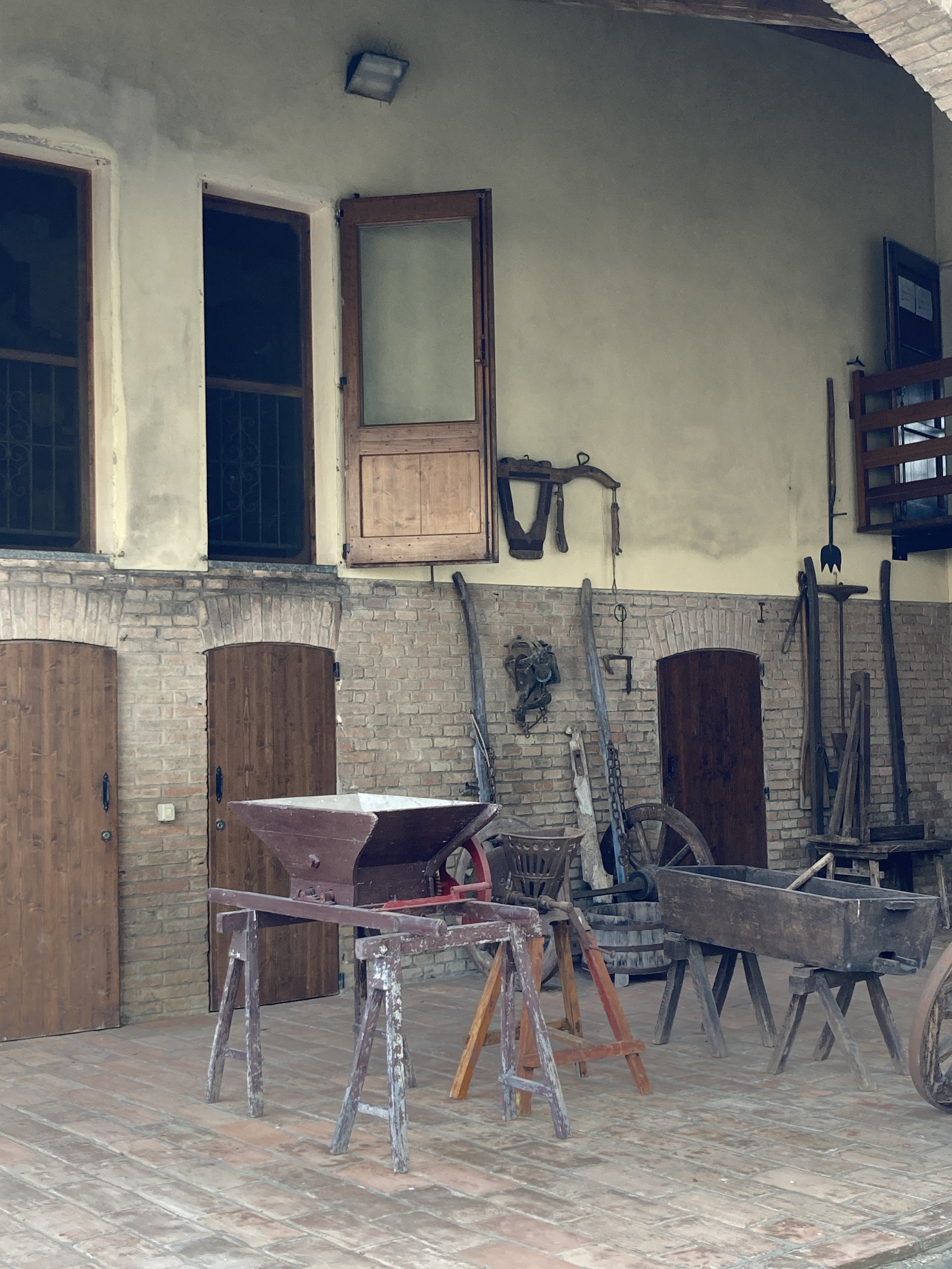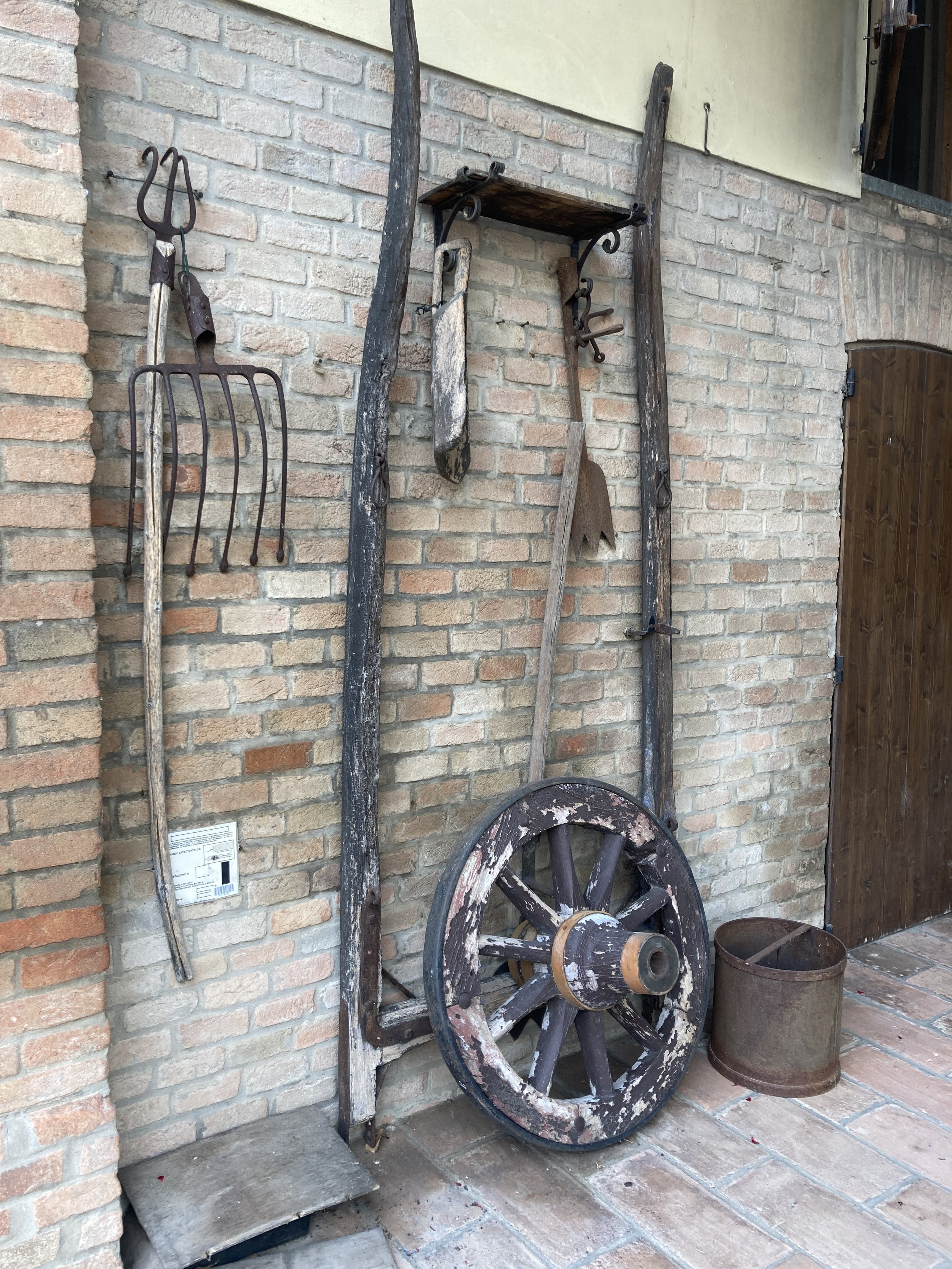Tasting Parma Part Two: Traditional Balsamic Vinegar
Some words just don’t translate well. Such is the case with the Italian word acetaio. Google translate will say that it means “vinegar maker”. But that does not begin to describe the people who produce traditional balsamic vinegar. An acetaio is so much more – an artisan, the keeper of an ancient tradition, and a gustatory magician. They are, justifiably, also a proud group of craftsmen. And they are perhaps the most patient people on earth, for the process of producing a traditional balsamic vinegar takes a minimum of 12 years and often much longer. The prized extravecchio (extra old) balsamics are aged 25 or more years. The acetaio often begins to ferment a batch of balsamico that won’t mature in his (or her) lifetime.
We are not talking your supermarket balsamic vinegar (a poor imitation of the real thing) but rather authentic Aceto Balsamico. As a Denominazione di Origine Protetta (DOP) product it may only be produced in the small geographically designated area of Modena and Reggio Emilia in the Emilia-Romagna region of northern Italy. Once rival cities in the making of traditional balsamic vinegar, today both towns are entitled to use the DOP designation. Having the DOP label also means that there are tight controls to ensure that the balsamico produced is of the highest quality. The controls extend to bottle size, labeling, and even to the classic red wax seal.
On my recent food tour in and around Parma (arranged by Get Your Guide), I had the opportunity to visit the Villa Medici Ermete near the town of Reggio Emilia. The villa and surrounding vineyards are owned by the Medici family whose main business is tending the vineyards and making Lambrusco wine.
Looking out over the vineyard from the acetaia at Villa Medici Ermete. If only all workplaces offered such a view!
Alongside wine making, they have also produced small batches of traditional aceto balsamico for the last 100 years. Long ago, the vinegars produced were reserved for family use or given as gifts and wedding dowries. Today they are bottled and offered for sale. Alessandra Medici, who oversees the process, describes the making of her aceto balsamico as both a hobby and a passion. In addition to managing the production, Alessandra gives wonderful tours during which she describes the traditional processes used to make and age the vinegar and invites guests into the attic to see (and breath in the scent) where the aging takes place. As a bonus, the tour concludes with a tasting.
The vineyard estate, with its central Villa Medici Ermete, is beautiful. The tour begins in a small museum in the open-air barn where old farm tools and wine-making equipment tell of the long history of wine and vinegar production on the estate.
Upstairs, above the barn, are rooms filled with wooden casks and the fragrance of fermenting balsamico. This is the acetaia, the attic where the grape must (the crushed grapes) ferments and becomes more and more concentrated over time.
As our guide explained, the process is fascinating yet quite simple. There is only one ingredient used – the must of grapes grown on the estate. The first step is to cook the grape must in a cauldron over an open flame for a full day to begin the process of evaporation. The liquid is then placed in the largest of a series of ever-smaller barrels. A set of barrels is called a battery and at the Villa Medici Ermete each battery consists of 5 barrels. In a long-standing tradition, a new battery is started and labeled with the name of each new baby born into the family. It matures as the child does, aging long past the minimum 12 years and passing on an important heritage. In the acetaia there was one battery which was started nearly 100 years ago, labeled with the name of an ancestor from several generations past.
Fermentation occurs in warm weather (a little bit of older fermented balsamico may be added to begin the process) and then in the winter of each year the liquid is moved to the next smaller barrel. The barrels are made of several different types of wood including oak, cherry, and chestnut. Each will contribute to the flavor of the vinegar. The barrels are left open to air, the vent at the top covered by a thin piece of linen, to allow for evaporation. Eventually the concentrated liquid moves from the last barrel in the battery to some even smaller barrels to finish aging. One room in the acetaia was lined with these small barrels.
These small barrels, of several different kinds of wood, contain the balsamic vinegar during the many years of aging.
Before the balsamico can be bottled for sale, it must be submitted to the local Consortium of Growers.
There, a panel of 5 expert tasters judge its characteristics (color, density, aroma, taste). If approved, the aceto (vinegar) can be bottled (under supervision) and labeled with the seal of the consortium and the red and yellow DOP symbol. That label verifies that the balsamic is a DOP Aceto Balsamico di Modena or di Reggio Emilia.
A dollop of thick, syrupy balsamic vinegar adds to the flavor of aged parmigiano reggiano cheese
A traditional aged balsamic is a joy to taste and I was fortunate to sample three different ones at the end of the tour. All were delicious, with clear differences in taste and consistency. The younger vinegars (red label, 12 years of aging) were sharper in flavor and thinner than the older ones. They are recommended for everyday use in salads or as a condiment for raw vegetables, fish, or carpaccio. The 18 year vinegars (silver label) were less acidic, a bit sweeter and smoother. Suggested uses include in sauces or on meat or to drizzle on top of paté. They are also wonderful paired with chunks of Parmigiano Reggiano cheese.
Lastly we tasted the oldest, 25 year balsamic (gold label). This is the highest quality and most prized balsamic vinegar. It is not used in cooking, but is wonderful on strong cheese and also on desserts. The syrupy sweetness compliments strawberries and is wonderful drizzled on some gelato. It may even act as a sort of digestive taken by a spoonful at the end of a meal (in years past is was taken this way to ward off the plague!). The flavor of this long-aged balsamic is a true luxury.
As with most things, quality and price go hand in hand. The long process of aging, the use of traditional methods, and the relatively small production mean that authentic balsamic vinegars can be quite expensive. The intense flavors, and the way a small amount can turn a dish from ordinary to extraordinary, make it a worthwhile investment. A bottle of the 18 year, silver balsamic now adds wonderful flavor to my kitchen in Lucca. Having seen how it is produced at Villa Medici Ermete family just makes it all the more delicious.
Next week: Part three of the series, Prosciutto di Parma










